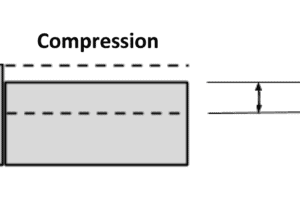Materials and Understanding Choices through the ASTM Tests
So many good competitors…so many good materials. It adds to the dilemma in picking who to work with and even more importantly, what to work with, when picking designs and materials for seals. I use the term “seals” broadly here to include all types of seals; die-formed packing rings, cut gaskets, o-rings, hydraulic packing, you name it…all are seals.
I remember, when in the mid-70’s, two really exciting new materials hit the market. Expanded PTFE and exfoliated graphite. These products changed the fluid sealing industry in many ways, and yet, there are still a lot of people who resist them even today, more for lack of understand them and their potential to eliminate sealing problems.
Some companies, including us, to some degree, promote gasket materials that have great “crush resistance” under heavy loads and higher temperatures. A valid point as we have seen applications where mechanical or virgin grade PTFE gaskets as an example, have extruded or cold-flowed under constant load and temperature over a period of time, leading to leaking and eventual re-torque until the gasket totally fails and needs to be replaced. A material with high “crush resistance”, creeps, or cold-flows only slightly, having high torque retention and requiring less maintenance time. But there are many other qualities in materials to consider. Crush resistance, while important for torque retention, is not the only property to consider.
The new expanded PTFE materials are interesting because they resist creep / cold-flow much better and are also engineered with different types of fillers to take even greater loads, having higher torque retention and again, reducing maintenance time. Exfoliated graphite gaskets, when installed, will compress more, but when under operating load and temperature, resists creep / cold-flow extremely well and requires little maintenance time because of very high torque retention. But if you only looked at crush resistance as a qualifier, you would have to omit both of these materials.
All of this becomes important when trying to decide on a material of choice for the application you may be working on. I don’t want to be pushing material at this point but rather some of the terms that we like to promote, to help the decision maker better understand what is important in making the choice. I believe you will find these helpful. They are not all of the tests, but these are key in trying to make a decision. Comments – questions??? Let me know.
STANDARDIZATION OF PHYSICAL CHARACTERISTICS
SEALABILITY
Sealability is measured according to the ASTM F37 specifications. It is an indication of the materials sealing ability under a set of conditions; a seating stress of 2000 psi is imposed through the flanges on the material sealing iso-octane at an internal pressure of 14.7 psi. The test is done at ambient temperature and the number shown is the amount of leakage in milliliters per hour. A lower number would generally indicate a better material.
COMPRESSIBILITY
Compressibility is measured according to the ASTM F36A specification. A load of 5,000 psi is imposed on the material and the loss of thickness is measured and expressed as a percentage of the original height. The compressibility of a material indicates, to a degree, its ability to fill flange scratches, nicks or voids and to flow or move to assist in sealing misaligned or warped flanges. In general, the higher the number, the easier it is to seat the material.

RECOVERY
Recovery is also tested under the ASTM F36A specification. Recovery is the measured rebound or increase in thickness from the compressed measurement once the load is removed. It is written as a percentage of increase over the compressed measurement and indicates the ability of the material to resist temperature and pressure. The higher the number, the better the material is at holding torque.

CREEP RELAXATION
Creep relaxation, also referred to as Torque Retention, is measured according to the ASTM F38 specification and indicates the materials ability to hold stress or bolt load over a period of time. It is expressed as a percentage of the original load and shows the amount of lost stress from that load. A lower number indicates a more stable material retaining torque and resisting leakage.
TENSILE STRENGTH
Tensile strength is measured under ASTM F152 and is given in pounds per square inch. It is the total force required to pull the material apart and is not related to the sealing function of the material. It relates more to the manufacturing process.

